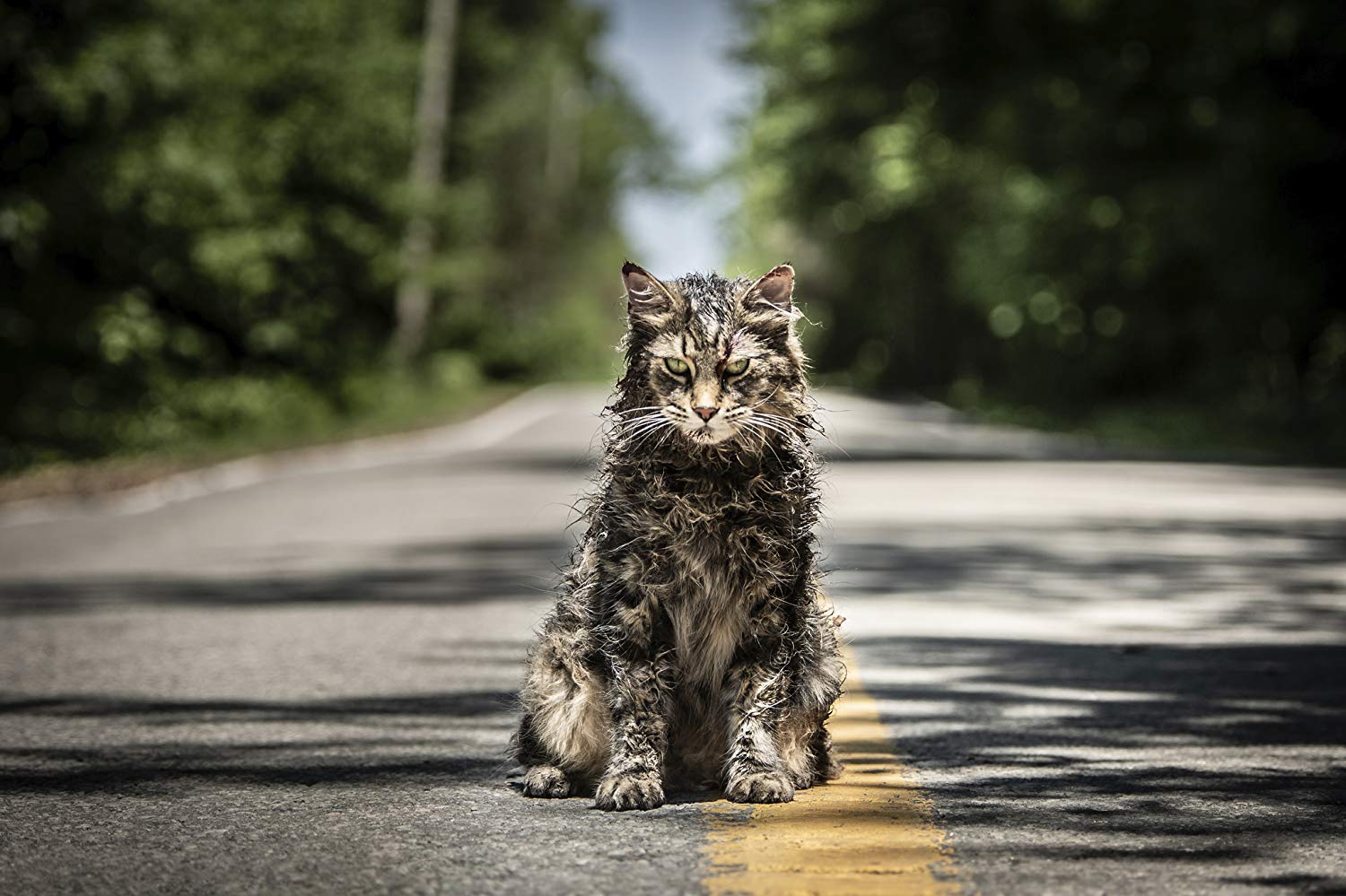The 2010s may seem like the renaissance of Stephen King adaptations, but in reality, they never really stopped. Starting with Brian De Palma’s Carrie in 1976, there have been at least 15 movie adaptations of King novels per decade. Some have been better than others—the 1989 version of Pet Sematary lands squarely in the “others” category. Mary Lambert’s film captured the heart of the book quite well, but it was relentlessly cheesy and occasionally dull. Not unlike an undead cat, though, Pet Sematary is getting a second chance at life with a 2019 remake.
While the new version makes a couple major changes to the original narrative, the setup of the story is largely the same: doctor Louis Creed moves to the small town of Ludlow, Maine with his family, and they accidentally purchase a property with an Indian burial ground in the backyard. When the family cat dies, a kind neighbor convinces Louis to bury it beyond the “Pet Sematary” where local children lay their pets to rest, and the cat comes back to life the next day—but it’s grumpier and meaner than before. From there, things get a lot more sinister than cat resurrection.
While the plot of Pet Sematary might have felt unique when the novel was written in 1983, it sounds all too familiar in 2019. Living atop an Indian burial ground is practically a red flag for horror clichés nowadays. This isn’t Pet Sematary’s fault, but it does mean that simply shifting the story from page to screen isn’t enough to make it interesting. It’s what the artists do with the story that creates a lasting impact.
Stephen King, undoubtedly one of the best horror writers to ever live, knows this well. His novel Pet Sematary isn’t about zombies so much as it’s about the crushing weight of grief. King based the book on tragedies that he actually experienced (and almost experienced), and he’s said that of all the stories he’s written, Pet Sematary is the one that frightens him most. King isn’t scared of ancient burial grounds or the undead—he’s scared of losing his loved ones, and of how he’d collapse under the weight of losing them. This theme comes through palpably in his novel.
It does not come through in 2019’s Pet Sematary. This remake excises everything that was thematically interesting in Stephen King’s book and leaves behind a run-of-the-mill horror movie. Tragedies still happen and characters still grieve, but the threadbare screenplay doesn’t give us a chance to know any of these characters: they’re just meat puppets for bad things to happen to. They don’t behave like humans when they interact. For example, when Louis confronts his neighbor and demands an explanation for the undead cat, his neighbor doesn’t give him a straight answer—but Louis immediately decides not to press the issue and walks away without further questions, because the movie wants to maintain a little mystery. Without a spark of life in these characters, it’s hard to care how they feel about death.
Of course, horror movies don’t need to have thoughtful subtext, but Pet Sematary doesn’t fill the void with recommendable scares either. If you’ve seen a modern horror movie or two, very little in Pet Sematary will surprise or shock you. There aren’t even that many jump scares. The filmmakers do succeed, however, in crafting some elements that aren’t possible in book form: visual atmosphere and sound design. Pet Sematary’s production design and cinematography are pervasively ominous, and every howl, cautious step, and tear of flesh rings out loud and clear. On aesthetic value alone, it’s a marked improvement over the 1989 adaptation.
But at least Mary Lambert’s film, while not particularly well made, understood what King was trying to express about the darkness of mourning. The remake’s eerie design and fine performances cannot make up for its hollow, lifeless sentiment. 2019’s Pet Sematary isn’t a corpse reanimated—it’s a corpse embalmed.
★★ (2/5)




